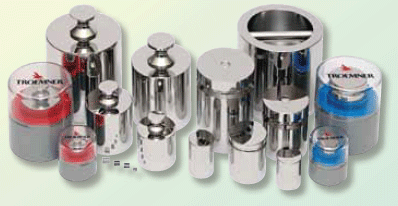Are your balances in balance? Do your scales read accurately? When weighing materials for research, testing, or production, the measurement you record will affect critical process parameters. If this reading is off, even just a little, the precision and efficiency of your work is now in question.
Ensure the validity of your weight and mass measurements with regular calibration. For balances, this means either using the services of a metrology lab or balance masses.
Using Balance Masses to Calibrate Balances
 Electronic balance masses are cylindrical shaped for easy stacking on balance weighing pans. Precision analytical masses feature two-piece construction and consist of a special austenitic alloy for high precision and stability. Use the guidance below to select the best calibration class for your application.
Electronic balance masses are cylindrical shaped for easy stacking on balance weighing pans. Precision analytical masses feature two-piece construction and consist of a special austenitic alloy for high precision and stability. Use the guidance below to select the best calibration class for your application.
UltraClass—With weight tolerances 50% greater than ASTM E617 Class 1 tolerances, these weights combine high precision with the advantage of two-piece construction (1 g and larger), avoiding costly replacement issues associated with one-piece weights
ASTM Class 1—Appropriate for calibrating high-precision analytical balances with a readability as low as 0.1 mg to 0.01 mg
ASTM Class 4—For calibration of semi-analytical balances and for student use
NIST Class F—Primarily used to test commercial weighing devices by state and local weights and measures officials, device installers, and service technicians. Class F weights may be used to test most accuracy Class III scales, all scales of Class III L or IIII, and scales not marked with a class designation
ASTM Class 6—Meet the specifications of OIML R 111 Class M2
To sustain the precision of weight and mass measurements, InnoCal maintains highly accurate comparison standards. We can customize test points to your specific needs including those dictated by USP. Along with balances and scales, we can also calibrate your calibration masses and check weights.